
BVE Route File
JNR Yamanote Line in 1960s
(Inner loop(counter clockwise) Osaki→Tokyo→Ueno)

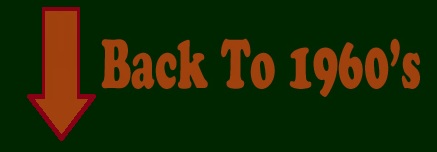

This is a route file(containing train files) for BVE5 train simulation game.
This route file reflects the image of JNR(*1) Yamanote line
in the late 1950s to the early 1960s
when construction of Tokaido-Shinkansen had not been started yet.
(*1) JNR : Present "JR" before privatization
Please follow procedure below and try driving Yamanote line half century ago!
1. Click the link "Download" below (OneDrive(ex-SkyDrive) page)
2. Select the file "BVE5_JNR_YamanoteLine(English).lzh"
3. Put contents of deconpressed folder(*2) into "Scenario" folder
(*2)Inner folder named "BVE5_JNR_YamanoteLine(English)"
4. Check the "ReadMe" text file before playing
There are 10 patterns of diagram different according to time.
<< Rush hour at morning >>
710G, 826G
<< Daytime >>
926G, 956G, 1314G, 1314G(other day version), 1322G, 1526G, 1664G, 1718G
Trains you will encounter vary by each diagram.
Diagrams & Trains to drive
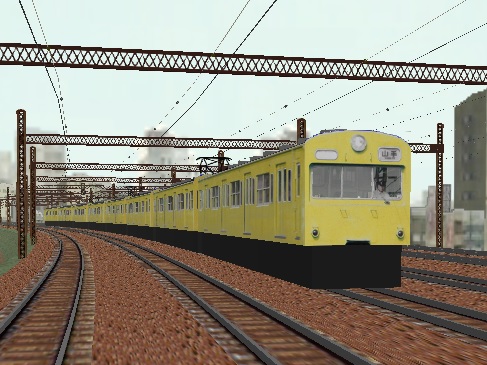
EMU101 Series
(Diagram : 926G, 1314G, 1314G(Other day version), 1322G)
The first cardan drived EMU in JNR introduced in 1957.
The feature of this series is various body colors according to lines.
(Ex. Yamanote line: yellow, Chuo line: orange, KeihinTohoku Line: skyblue)
All cars have withdrawn by November 2003.
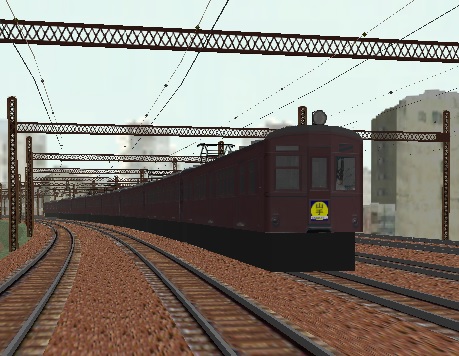
EMU40 Series & EMU60 Series
(Diagram : 826G(EMU60), 1526G(EMU40), 1718G(EMU60))
The first group of EMUs of 20m(66ft) long cars introduced in 1932.
EMU40 Series have 4 pairs of MT-15 motors that generates
100kw of rated output(1 car total: 400kw) per each motor car.
EMU60 Series is power up version of EMU40 with MT-30 motors
of 128kw(1 car total: 512kw) by the same distribution.
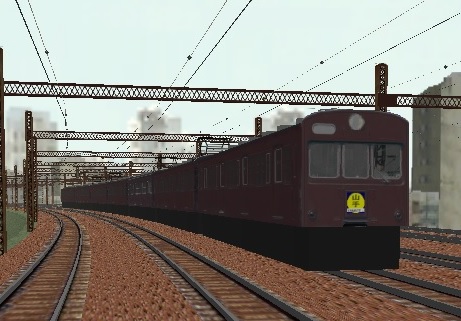
EMU72 Series
(Diagram : 956G, 1664G)
Major group of old style EMUs of JNR mainly used for commuter transit.
First group was manufactured in 1944 amid World War II,
and originally called EMU63 Series. After the Sakuragicho Train Fire in 1951
which killed more than 100 passengers because of it's structural defect,
they were improved and renamed EMU72 Series. After this rename,
additional production of EMU72 Series were continued until 1958,
and made various exterior according to time of manufacture.
Attention! : This diagram needs to get train file separately.
Please
visit following site to get train file.(Author: わゐの部屋 : Wai's
Room)
Download Site
Click "English" and select car model
・file: JNR OldTrainPack
・vehicle: 73_vehicle or 79_vehicle
*73_vehicle : a control car with motors, 79_vehicle : a control car
If you fail to decompress downloaded file, plese try using 7-Zip(free software).
<< Additional Information >>
Train formation : 7cars length(4 power cars + 3 trailer cars)
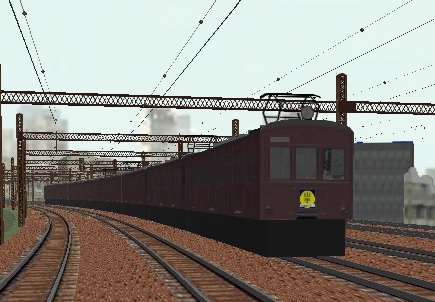
KUMOHA11(One of ex-EMU30/EMU50 Series)
*KUMOHA : a cab car with motors
(Diagram : 710G)
EMU Series of 17m long cars introduced in early Showa era(late 1920s to early 1940s)
originally called EMU30 or EMU50 Series. From this series, JGR* introduced trains with steel body
because of price hike of wood after the Great Kanto Earthquake in 1923 and safety improvement.
*JGR : Japanese Government Railways, predecessor of JNR
In 1953 they were renamed as below.
(1) MOHA11(cab cars with motors, renamed as KUMOHA11 in 1959)
(2) KUHA16(cab cars)
(3) MOHA10(motor cars without cab)
(4) SAHA17(trailer cars without cab)
(5) MOHA12(motor cars which have cab at both ends, renamed as KUMOHA12 in 1959)
Attention! : This diagram needs to get train file separately.
Please
visit following site to get train file.(Author: わゐの部屋 : Wai's
Room)
Download Site
Click "English" and select car model
・file: JNR OldTrainPack
・vehicle: 12_vehicle
If you fail to decompress downloaded file, plese try using 7-Zip(free software).
<< Additional Information
>>
Train formation : 8cars length(5 power cars + 3 trailer cars ?)
Vehicle Weight
KUMOHA11 : 42.5〜43.2t
KUHA16 : 29.1〜30.5t
SAHA17 : 27.3t
How to control ATS(Automatic Train Stop) Device?
You will have red signals and ATS device will work many times
paticularly in the senario of 710G and 826G. Because they are diagrams
of rush hour, preceding train is running right in front of your train.
When you get in front of red signal, the ATS alarm will ring loudly
(alarm sounds like alarm clock or old style telephone ringing).
Then please set the brake position to "重なり"* or "常用"*
* : "常用" is to strengthen the pressure, "重なり" is to keep the same strength of pressure
and press alarm confirmation button(space key) to stop the alarm(*3).
After alarm confirmation, chime sound("Ding Dong Ding Dong…"sound) will continue.
After stopping or checking that the red signal is changed to other color,
please press insert key to stop the chime.
(*3) Without alarm confirmation within 5 seconds, emargency brake
will automatically be applied. Then you must set brake
to "非常"(emergency)
position and press home key to release ATS.
*BVE5.8, BVE6.0 and later…
The EB device is enabled, so if there is no operation
(acceleration, brake, horn) for 60 seconds or more,
a warning buzzer will sound to confirm the safety of driver.
When the warning buzzer
sounds, please press the Delete key
to stop the warning. If no operation is performed while the
warning is sounding,
the emergency brake will be applied.
Question & Contact